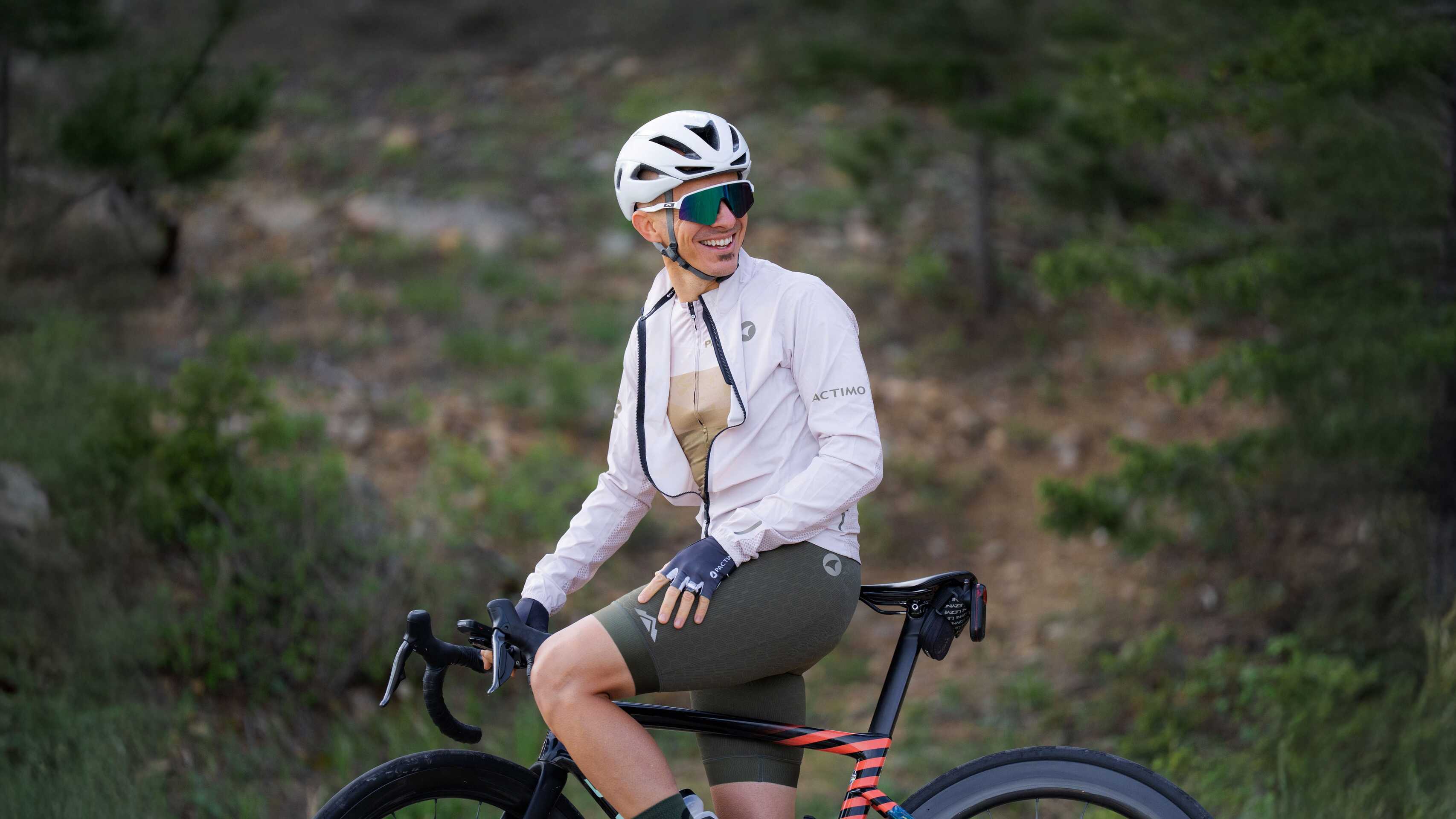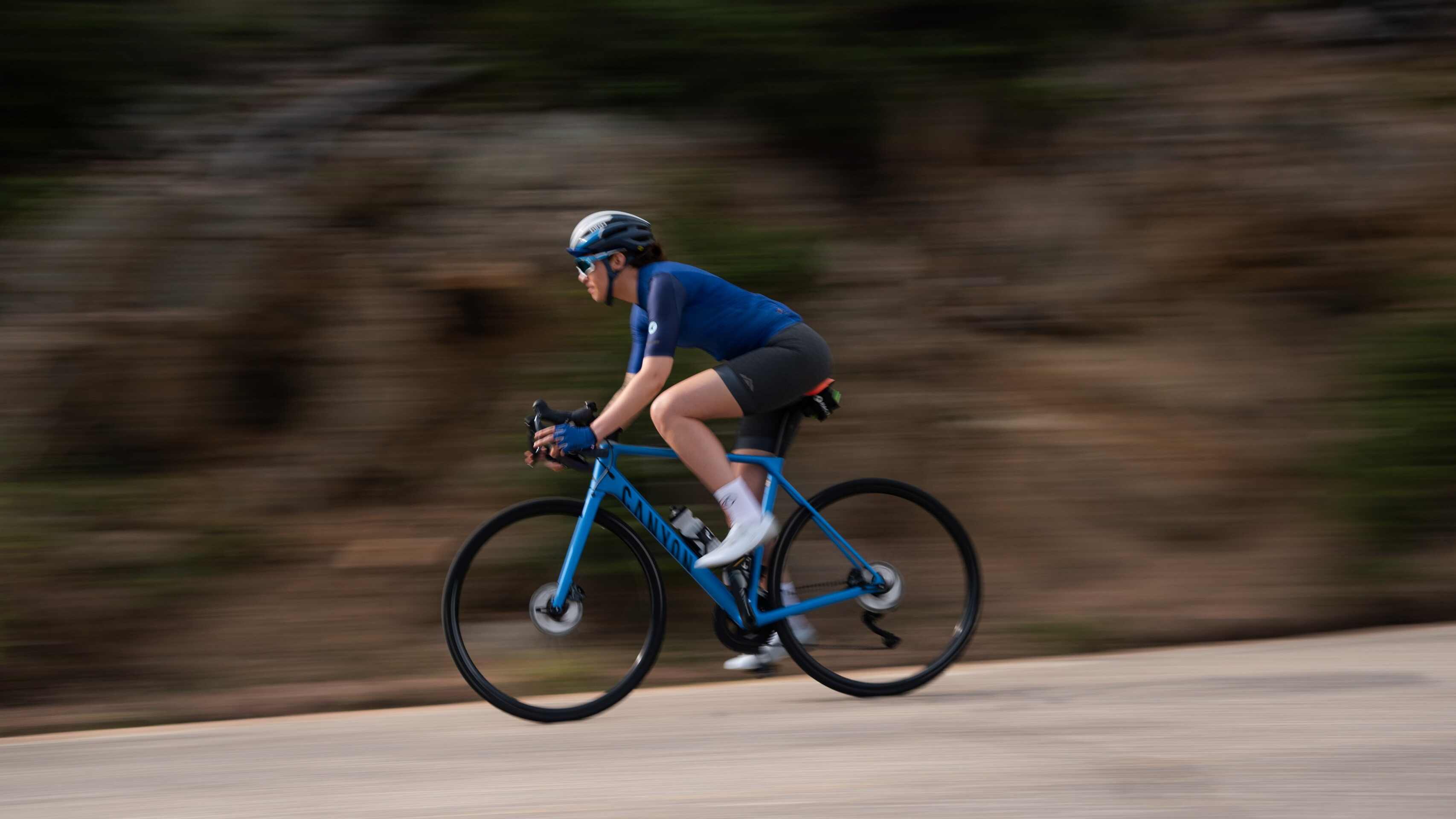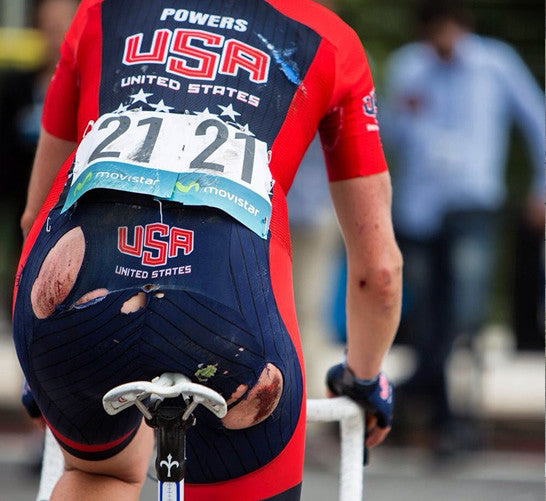“It’s important to clean out the wound(s) as best as possible to avoid any infections.”
by Alison Powers, ALP Cycles Coaching
(AP and Olivia Dillion pictured above, show off their road rash post LT 100). The broken skin can be patched up and covered, but the next day, the bruised bumpy and battered body will feel like it’s been hit by a truck. Here are some recovery tips by ALP Coach Alison Powers (who has hit the deck many more times than once).
Crashing hurts. Not only does falling down on the pavement hurt, it can cause its, abrasions, road rash, bruising, and swelling. Crashing can also cause inflammation in the body that we can not see.
The first thing that needs to be done after a crash is to wash the road rash and any abrasions to the skin. It’s important to clean out the wound(s) as best as possible to avoid any infections. Once cleaned out, I suggest using Tegaderm on all road rash. There are differing opinions on how to best heal road rash – leave the wound open to let it dry and scab, or put Tegaderm on it to keep it moist. My vote is Tegaderm.
After the visible road rash, cuts, scrapes, etc. are cleaned and covered, the next thing to move on to is the bruising and inflammation. Anything that hurts or is already showing signs of swelling should be iced. Apply ice to painful areas for 10min. Plan to ice for 10min of every hour (10min on, 50 min off). Ibuprofen is great for inflammation and pain management. I like ibuprofen because it helps me sleep (sleep helps healing) after a crash and it helps with inflammation, making it so I don’t feel as bad the next day.
The days following a crash can be tough. Your body can hurt, new bruising, aches and pain show up, and road rash oozes, scabs, and hurts. The best thing you can do is get out and move around. Either go for an easy walk or get back on your bike and spin the legs easily. This ‘active recovery’ will help promote blood flow (which brings nutrients to the injured area), start to break up and move the inflammation, and gets stiff joints moving and feeling good. Keep icing areas that are swollen and sore and change Tegaderm daily.
Most of all, in the days following a hard crash, it’s important to remember that your body is healing. The harder the crash, the more trauma your body has to deal with and heal. So, take it easy. Easy rides, good hydration, and good nutrition. The better you can take care of your body and provide it with good nutrients, the faster it will heal itself and the faster you will be back on your bike and riding strongly.
ABOUT THE AUTHOR
Alison Powers only recently retired from cycling, finishing her final season on the UnitedHealthcare Women’s Team. Her career has spanned a wide array of wins, including the 2013 USA Cycling Professional Criterium National Championship where she won in memorable fashion by soloing after an early breakaway that obliterated the pro women’s peloton. Other standout results during the 33-year-old’s 2013 season include the win at Redlands Bicycle Classic, second at the Tour of Elk Grove, third at the US National Road Championship and the US National Time Trial Championship, and stage wins at Cascade Classic, Tulsa Tough, Tour of the Gila and Redlands Bicycle Classic. Hailing from Fraser, Colorado, Powers has been racing bikes professionally for eight years and is a true athlete with her career beginning as a teenager in mountain bike racing. In her mid 20s, she added in alpine ski racing before switching over to the road. In addition to being the current Criterium National Champion, Powers has two other national championships (Time Trial, Team Pursuit) and 2 NRC titles (2009, 2013).










